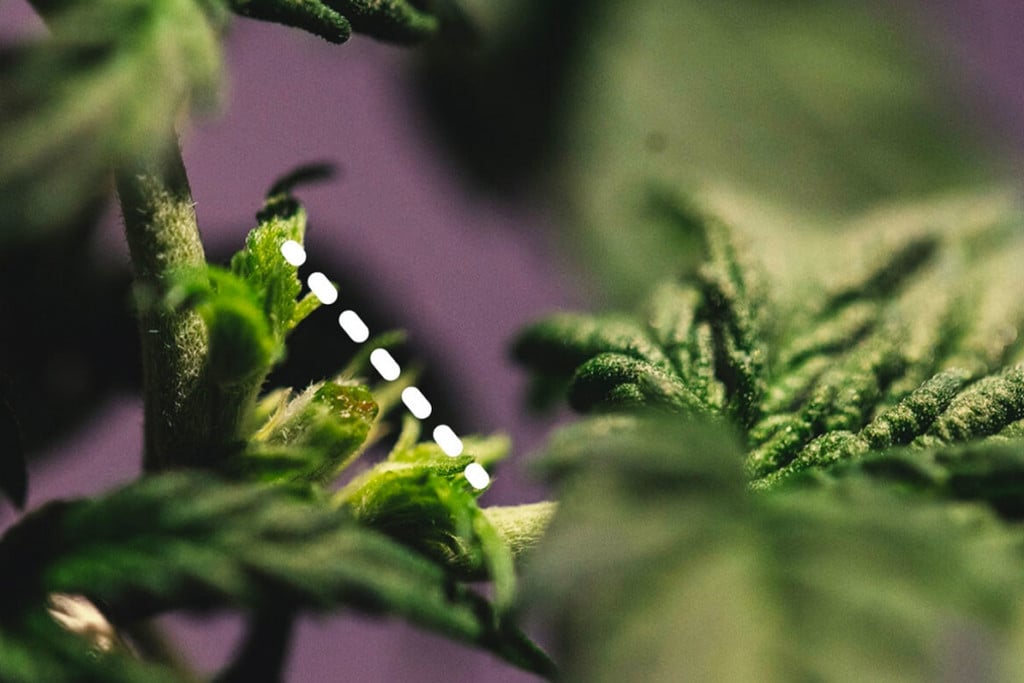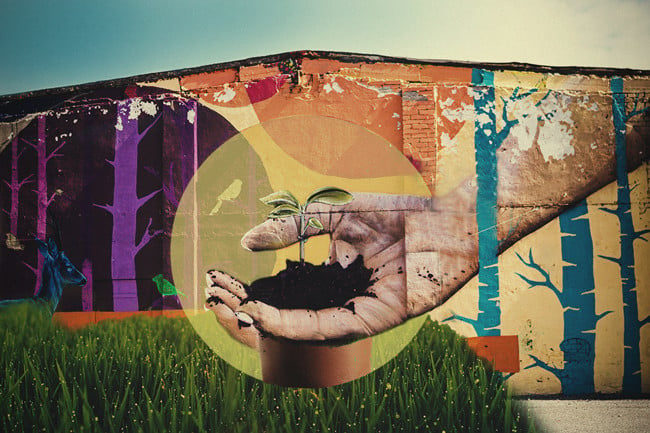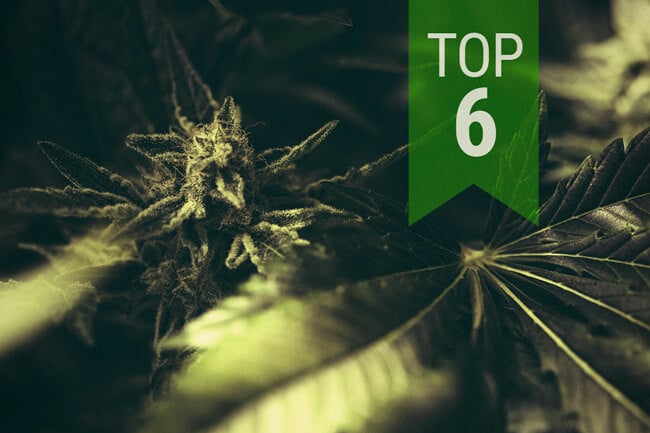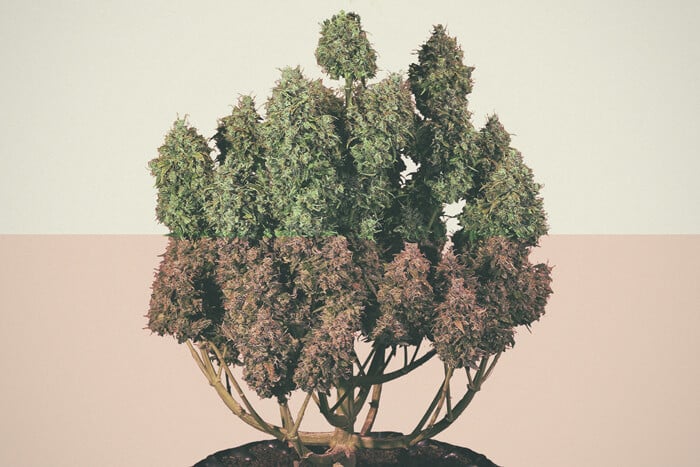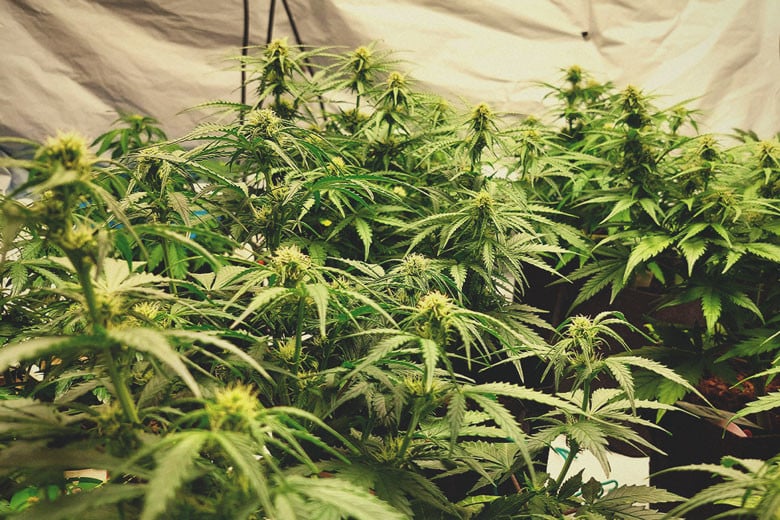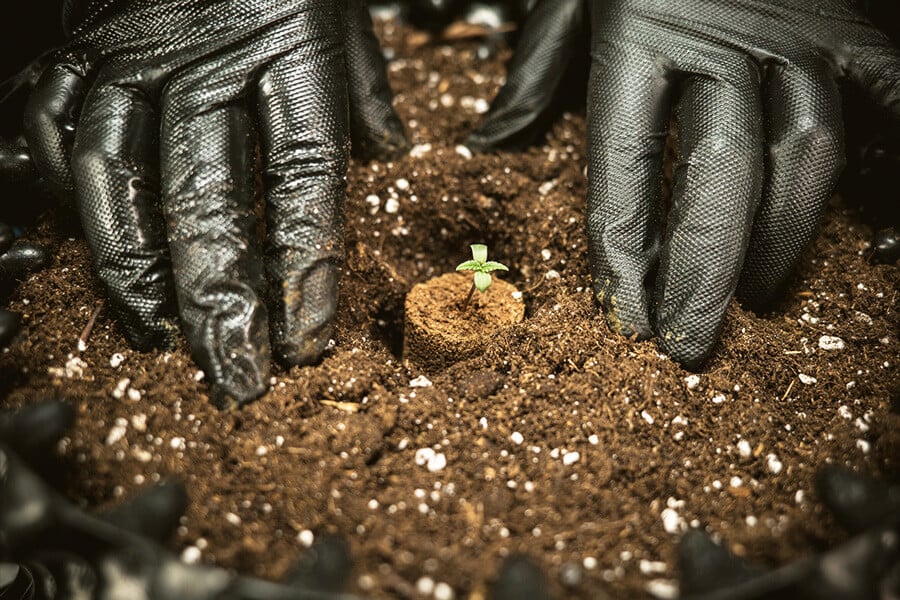.
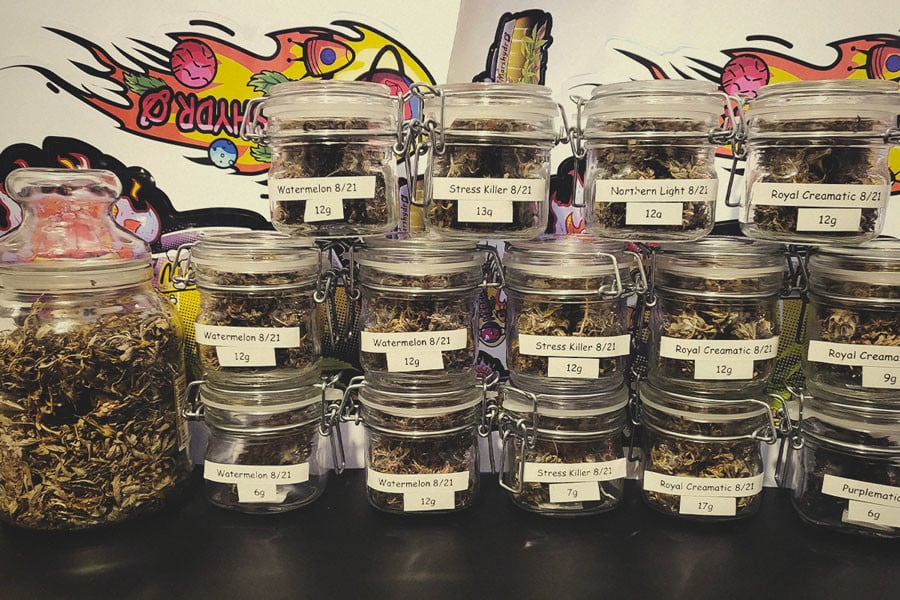
How Much Do Autoflowering Plants Yield?
Autoflowering plants win over many growers thanks to their rapid growing times and compact size. If you're about to grow autos for the first time, you're probably thinking about what to expect come harvest time. Here, we'll walk you through the kind of yields that await. You'll find out how pot size and lighting plays a crucial roles.
Contents:
If you've never grown autoflowering cannabis before, you might be wondering what to expect. You're probably aware of their key traits, such as impressive speed and hardy genetics. But some growers say that their small yields aren't worth the time. However, modern auto strains have come a long way—below, we'll show you how much weed you'll end up with under different conditions.
How Much Do Autoflowering Plants Yield?
The Royal Queen Seeds catalog contains a wealth of autoflowering genetics. Our range includes something for everyone and varies in tastes, aromas, psychoactive effects, and sizes. The inherent productivity of each strain also differs slightly. Whereas powerhouse anomalies such as Watermelon Automatic will churn out up to 17.6 oz/m², you can expect an average autoflower yield from most of our auto varieties to sit within the 12.3 – 14.1 oz/m² range indoors and 3.5 – 5.3 oz outdoors.
Dry vs wet: How to calculate autoflower yields per plant
Just like us, cannabis plants are composed of a lot of water. In fact, water gives freshly harvested cannabis buds around 75% of their initial weight. The number you see when shopping around for seeds reflects the overall weight of wet buds. To find out how much yield you'll end up with after drying, per plant, you can perform a simple calculation. First, weigh your wet harvest and record the yield from each plant. Once weighed, simply multiply each number by 0.25 for a relatively accurate figure of the weight your dried bounty will be.
Conditions That Affect Autoflower Yields
Now that you have a better idea of the average autoflower yield, and how to estimate the weight of your dry stash, it's time to dive into some of the factors that influence autoflower yields per plant. Luckily, you have a lot of control over all of these variables, especially if you have the room to cultivate indoors.
-
Genetics
Different strains offer different outcomes. For example, early autos such as Lowryder played a pinnacle role in the world of breeding. Still, they didn't produce enough strong buds to excite most growers. It made early autos a tool for breeders to advance and experiment with, rather than attractive strains for hobby growers to use.
Compare this to modern autoflower cannabis seeds, created by our talented breeders at RQS, and you see a huge improvement. Strains such as Hulkberry Automatic offer an impressive return of up to 17.6 oz/m² under the correct indoor conditions while producing a THC content of 21%. These stats place modern autos in the same league as many photoperiod cultivars. However, some modern autos still offer stealth over yield. Quick One grows to around 23.4 inches and offers an average yield of 10.6 oz/m² indoors, and Royal Dwarf provides a return of 5.3 – 7.1 oz/m².
-
Environment
You'll have to keep track of variables such as temperature and humidity when growing indoors to help your plants thrive. But these figures should not remain the same throughout the entire growing cycle. You can avoid this by purchasing high-quality seeds from a reputable supplier. Plants also struggle in the seedling stage when given too many nutrients, when handled and transplanted too aggressively, or when overwatered.
| Seedling stage | Vegetation stage | Early flowering | Late flowering (1 week before harvest) |
| Temperature: 20–25°C |
Temperature: 22–28°C |
Temperature: 20–26°C |
Temperature: 18–24°C |
|
Relative humidity: |
Relative humidity: |
Relative humidity: |
Relative humidity: |
| Seedling stage |
Vegetation stage |
| Temperature: 20–25°C |
Temperature: 22–28°C |
| Relative humidity: 65–70% |
Relative humidity: 40–70% |
| Early flowering | Late flowering (1 week before harvest) |
| Temperature: 20–26°C |
Temperature: 18–24°C |
| Relative humidity: 40–50% |
Relative humidity: 30–40% |
Indoor growers have an advantage here. They can use humidifiers, dehumidifiers, heaters, and fans/air conditioning units to modulate these variables with grow tents. In contrast, outdoor growers have little influence over temperature and humidity—their local climate will dictate these conditions. Generally, those closer to the equator has an advantage over those who are not in this regard.
But temperature and humidity aren't the only environmental variables to consider. Indoor growers can infuse their growing space with supplementary carbon dioxide—a gas that plants use to fuel growth. Some growers report a 20% increase in yields when using CO₂. When used correctly, you could raise the upper yield limit of strains such as Purple Punch Automatic from 14.1 oz/m² to 16.9 oz/m², and that of HulkBerry Automatic from 17.6 oz/m² up to 21.2 oz/m².
But you can't start mindlessly pumping CO₂ into your grow tent. You need to aim for saturation of 1500 parts per million (PPM). To achieve this, you need to take the size of your tent into account and also adjust the temperature; plants like it hotter when they have more access to CO₂. First, you need to work out the cubic area of your grow tent using this equation: length x width x height. For example, a 2 x 2 x 0.1 ozow tent will have a cubic area of 8m³.
Next, multiply the cubic area by 0.001 to determine how much CO₂ you'll need to use to reach a saturation of 1,000ppm. In this case, 8 x 0.001 = 0.008 cubic meters of CO₂. To reach saturation of 1,500ppm, you first need to divide this sum by two, leaving us with 0.008 ÷ 2 = 0.004. Then, add this figure to the previous sum: 0.008 + 0.004 = 0.012 cubic meters of CO₂. Finally, set the dial of your CO₂ pump to the final sum.
Growers also have influence over the growing medium they raise their plants in. While most opt for soil, hydroponic methods (a soilless technique in which the roots are either temporarily or constantly bathed in water) can result in yield boosts of around 20%. In these systems, roots have direct access to freeform water-soluble nutrients, which helps them grow faster and churn out superior yields during their set lifespan. You can expect Royal Critical Automatic, for example, to produce yields of up to 16.9 oz/m² indoors when using hydroponics techniques.
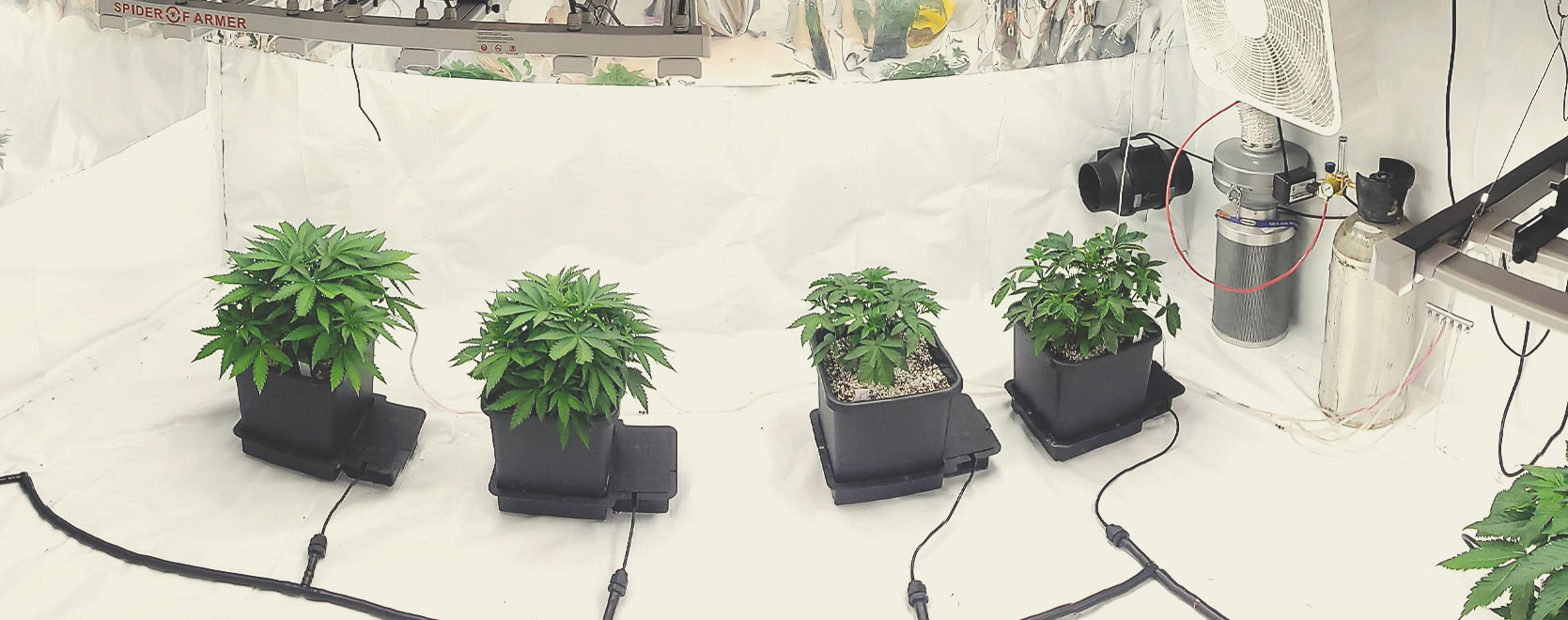
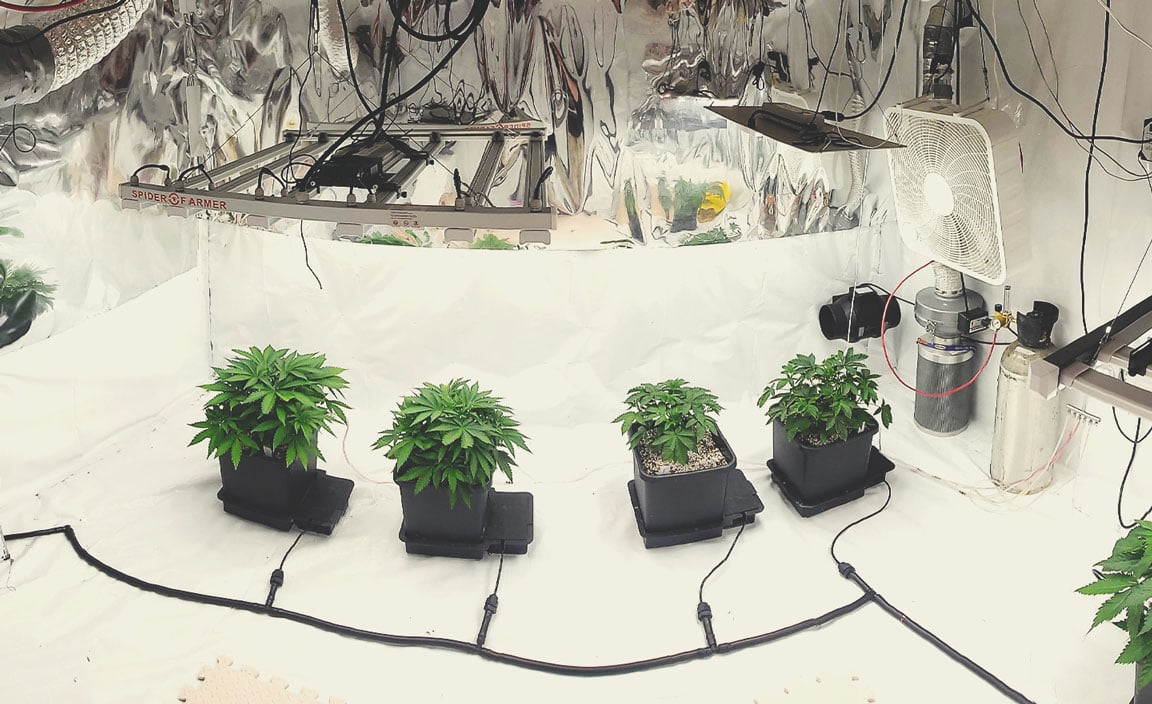
-
Lighting: Indoors vs outdoors
Autos are subject to different growing conditions when raised either indoors or outdoors. This affects their output, so you can expect different results in either of these settings.
- Growing autos indoors
Indoor plants cultivated in grow tents aren't exposed to the sun. Therefore, growers need to select an appropriate light source; there are plenty of options to choose from, including LED, HPS, and CFL. You can expect different results based on the type and strength of light you choose to work with. As a general rule, many growers base their yield on receiving 0 oz of bud for every watt their light uses, put simply as 0 oz/watt. However, even with the same wattage, lights vary based on the photo-power they provide to plants. Therefore, you can expect efficient LED lights to produce more of a bounty than a HPS source of the same wattage.
However, when working with autos, we suggest adjusting your expectations to around 0 oz/watt. Going by these numbers, you can expect to receive roughly 1.8 oz when using a 100W LED light, and around 1.4 oz when using a 100W HPS lamp. However, you're not limited to such weak lighting. You can achieve approximately 3.5 oz when using a 200W CFL, and upwards of 7.1 oz under a 400W LED light.
You also need to decide how long to keep your lights on. Autos can bask in light 24 hours a day and still flower. Keeping your lights on at all times will bring your yields above the average (based on your pot size and light potency), but will cost more. We recommend shooting for 18 hours on and 6 hours off to achieve good yields while saving some money.
- Growing autos outdoors
Outdoor growers don't have as much control over lighting. Those located in warm and sunny climates further south have an advantage over those further north. However, there are other variables to consider. A grower in the south might live in a good climate, but if they only have a shady position to work with, they might experience less of a return.
You should aim to locate your plants in a south-facing position that receives a minimum of 8 hours of direct light per day throughout the growing season. If you have access to these conditions, you can expect a rewarding outdoor autoflower yield of around 5.3 – 6.2 oz; genetics and climate will affect these numbers. However, if you have to make do with a shaded spot with significantly less sunlight, reel in your expectations to around 50–3.5 oz.
-
Pot size
You should expect different auto yields from different pot sizes. Containers can either limit plant growth or help specimens unleash their full potential. We recommend using an 11L pot when growing autos for the best results. It's also a good idea to directly sow autoflower seeds into their final pot to avoid transplant: the recovery phase following this procedure can reduce yields as autos have such a short growing cycle.
Check out some different pot sizes, and the average yield you can expect from each, below:
- 2L: 3.5 – 5.3 oz/m² indoors or 35–1.4 oz outdoors
- 5L: 7.1 – 8.8 oz/m² indoors or 2.6 – 3 oz outdoors
- 11L and bigger: 400–17.6 oz/m² indoors or 5.3 – 6 oz outdoors
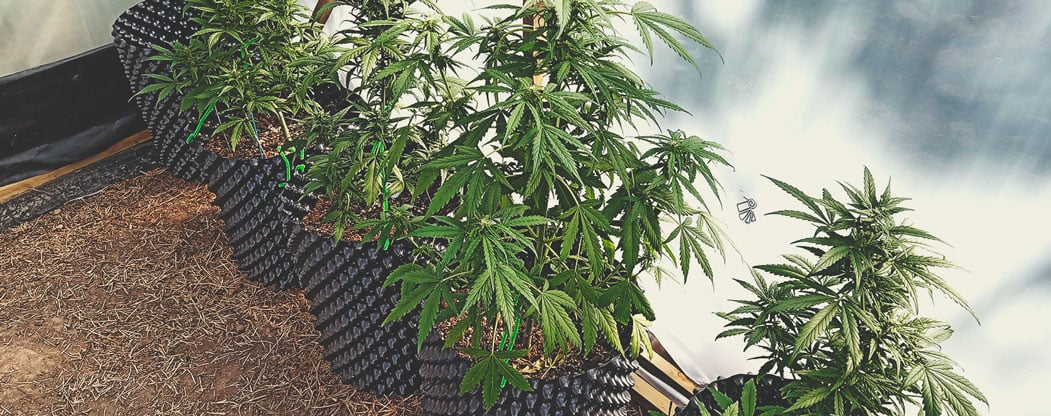
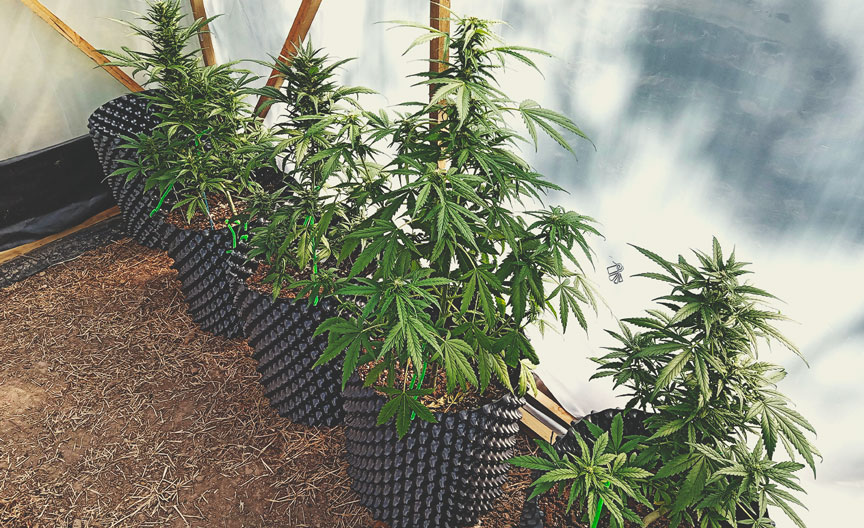
-
Space
The space you have available will drastically influence your total yield at the end of a grow; the pot size you use also comes into play here. You can fit around 9 plants situated in 11L pots into 1 square metre, or 18 plants grown in 5L pots in the same space. As you can see, you don't need much room at all to grow quite a few plants.
So, how does this translate into overall yield? You need to take many variables into account. Let's say you grow 9 plants in an 11L pot under a 600W LED light. Depending on the genetics, you could expect to receive a bulky return of 21.2 oz/m². With time and experience, and by saturating your grow tent of 1,500PPM of CO₂, you could even boost this number towards 35.3 oz/m², optimizing every inch of space.
Let's take a look at another scenario; you decide to use smaller 5L pots in a space covering 2 square metres. You can fit a maximum of 36 plants in this space. Under two 400W LED lights (one for each square metre) you could expect a monstrous return of 42.3 oz/m².
To get an estimate of your yields, take these factors into consideration:
| Pot size | Light source | Space | Are you using CO₂? |
| Pot size | Light source |
| Space | Are you using CO₂? |
-
Nutrients
Nutrients are vital for plant growth. Your autos require macro and micronutrients in order to fulfill key processes, such as photosynthesis and protein synthesis. But cannabis autos aren't as hungry as their photoperiod counterparts. You'll need to start out with a specialized cannabis auto potting mix that should look something like this:
| 3 parts peat moss | 3 parts compost | 2 parts perlite (pre-wet) | 1 part vermiculite (pre-wet) |
| 3 parts peat moss | 3 parts compost |
| 2 parts perlite (pre-wet) | 1 part vermiculite (pre-wet) |
After covering the basics, you'll also need to keep your plants fed with additional nutrients throughout the growing cycle. While synthetic options work rapidly, growers sometimes run into issues (including toxicity) that can affect plant growth and impact yields. For this reason, we suggest using organic nutrients at 75% of the recommended dose to meet the reduced appetite of your autoflowering cannabis.
Growing organically helps to preserve soil life, reduce runoff, and enhance soil structure. These factors create a better environment for cannabis plants both indoors and outdoors and can push your auto yields above the average. Considering you've covered all of the other bases, organic growing will help to push your yields that much further. No-dig methods that add mulch to the top of the soil (instead of mixing it in) help to keep soil life intact, and are known to increase the productivity of some crops by more than 30%[1].
You should also consider introducing beneficial microbes into the mix. Cannabis forms synergistic relationships with friendly bacteria and mycorrhizal fungi. It gets easy access to nutrients in return for plant sugars.
-
Training
To train or not to train? Many auto cannabis growers ask themselves this question at some point. Autos grow so fast that some cultivators question whether the stress of training could reduce yields. This definitely makes sense when considering the heavy-handed approach of high-stress training. However, these more gentle methods work well at boosting auto harvests. Many growers experience great results with low-stress training (LST). This technique involves gently tying down the main stem to the rim of the pot so it sits parallel, which allows branches to shoot upwards and create an even canopy.
What Leads to Poor Autoflower Yields?
Now you know what to aim for to produce the best autoflowering yield per plant possible. But what should you avoid? Several factors can slow down growth, damage plants, and result in poor outcomes. These are the most important issues that auto growers face:
| Poor germination | You can avoid this by purchasing high-quality seeds from a reputable supplier. Plants also struggle in the seedling stage when given too many nutrients, when handled and transplanted too aggressively, or when overwatered. |
| Low humidity | Too little humidity can cause your plants to dry out and develop crispy leaves. Plants depend on their leaves to survive, so make sure you aim for the desired relative humidity for each stage, as detailed above (if possible). |
| Lighting issues | If indoors, make sure you have a light powerful enough for the number of plants you want to grow. Likewise, if your plants grow too close to the light, they can become burned and bleached. Aim to keep your light at least 7.8 inches away from the canopy during the growing cycle. However, the type of light and its power will have an effect on this, so be sure to read our guide linked above on proper lighting. |
| Not enough light hours | Keep your lights on for a minimum of 18 hours each day. Anything less than this will result in subpar yields. |
| Small pots | Unless you're really short on space, we suggest using 11L pots to get the most out of each plant. Although you can use many small pots in a large space, this takes up more time when it comes to watering, feeding, and general care. |
| Recovery time and broken branches | High-stress training works great with photoperiod strains, but you risk breaking branches and stressing your plants out; these factors will slow growth and affect yields because autos have such a short growing cycle. |
| Pests | Small critters can inflict large amounts of damage. We recommend protecting specimens with companion plant species that bring in natural predators for the best autoflower yield outdoors. |
| Watering errors | Many beginners have the tendency to smother their plants with too much water. As a rule of thumb, let the top 2 inches of soil completely dry out before giving your autos another drink. |
| Poor germination |
|
You can avoid this by purchasing high-quality seeds from a reputable supplier. Plants also struggle in the seedling stage when given too many nutrients, when handled and transplanted too aggressively, or when overwatered. |
| Low humidity |
| Too little humidity can cause your plants to dry out and develop crispy leaves. Plants depend on their leaves to survive, so make sure you aim for the desired relative humidity for each stage, as detailed above (if possible). |
| Lighting issues |
| If indoors, make sure you have a light powerful enough for the number of plants you want to grow. Likewise, if your plants grow too close to the light, they can become burned and bleached. Aim to keep your light at least 7.8 inches away from the canopy during the growing cycle. However, the type of light and its power will have an effect on this, so be sure to read our guide linked above on proper lighting. |
| Not enough light hours |
| Keep your lights on for a minimum of 18 hours each day. Anything less than this will result in subpar yields. |
| Small pots |
| Unless you're really short on space, we suggest using 11L pots to get the most out of each plant. Although you can use many small pots in a large space, this takes up more time when it comes to watering, feeding, and general care. |
| Recovery time and broken branches |
| High-stress training works great with photoperiod strains, but you risk breaking branches and stressing your plants out; these factors will slow growth and affect yields because autos have such a short growing cycle. |
| Pests |
| Small critters can inflict large amounts of damage. We recommend protecting specimens with companion plant species that bring in natural predators for the best autoflower yield outdoors. |
| Watering errors |
| Many beginners have the tendency to smother their plants with too much water. As a rule of thumb, let the top 2 inches of soil completely dry out before giving your autos another drink. |
Happy Auto Growing!
You're ready to get some seeds into the soil and start the journey towards harvesting your own auto stash. Remember, there are many different ways you can optimise autoflowering cannabis yields, including starting with the right genetics and dialling in temperature, humidity, feeding, watering, and training techniques. While these are paramount, you shouldn't forget to avoid those factors that can reduce yields, including poor lighting, pests, and bad watering practices.



























